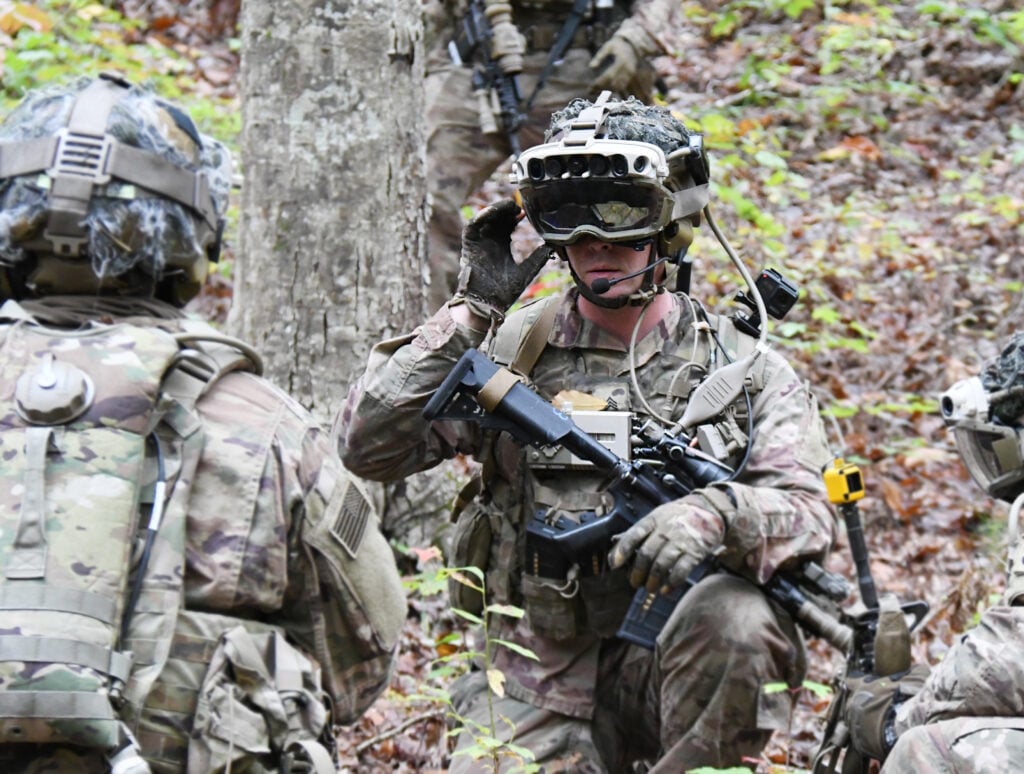
Soldiers test the latest, ruggedized version of the IVAS targeting goggles at Fort Picket in October 2020.
WASHINGTON: The House-Senate conference on the 2021 defense policy bill delivers a rebuke to the Army’s ambitious modernization program, cutting several high-priority programs priorities while adding to one program the Army had sought to end.
True, the National Defense Authorization Act, expected to survive a presidential veto threat, is not the final word on 2021 funding. That would be the still-delayed defense appropriations bill. But it still sends a strong and not entirely reassuring signal to the service — especially when its former Chief of Staff, now Chairman of the Joint Chiefs, is predicting a budgetary “bloodbath” in 2022 as ground-force programs are cut to help fund the Navy, Air and Space Forces.
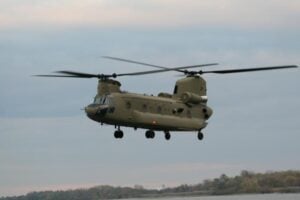
CH-47F Chinook
Now, this final draft of the 2021 NDAAA does make modest plus-ups to research & development for all of the Army’s Big Six priorities: Long-Range Precision Fires, Next Generation Combat Vehicles, Future Vertical Lift, the tactical Network, Air & Missile Defense, and Soldier Lethality. But most of the additions are in a relatively early phase of R&D. Late-stage R&D – particularly what the Pentagon calls System Development & Demonstration – and actual procurement of Army priority programs took some big hits.
At the same time, the Congress added millions to a program that the Army had tried to cut, the CH-47 Chinook heavy-lift helicopter. While the newest CH-47F Block II model is undoubtedly a major upgrade, the basic Chinook design dates back to the Vietnam era, and the Army had hoped to stop investing in incremental improvement so it could free up funds for more radical technology. But the conference NDAA nearly doubled the Army’s CH-47F request: It added $136 million for five helicopters above the 2021 request, which had been just $160.1 million for six. It also added another $29 million for Advanced Procurement of helicopters in future years to the Army’s $18.4 million request.
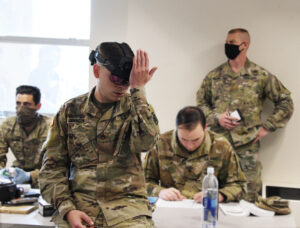
A soldier calibrates an early version of the IVAS targeting goggles
Goggles & Gunsights
The biggest blow – which our readers will have seen coming – was to the Soldier Lethality portfolio’s Integrated Visual Augmentation System (IVAS) goggles, basically a militarized Microsoft HoloLens that projects a targeting cross-hairs and other tactical data superimposed on the wearer’s field of vision. The Army is excited about the potential for both combat and training, from improved rifle marksmanship to calling in AI-guided airstrikes and artillery. But early prototypes weren’t tough enough for field conditions. While the Army is already testing a ruggedized model, Congress – especially the House Armed Services Committee – remains concerned the service is rushing the technology into service.
In its 2021 budget request, the Army asked for $1.1 billion to buy IVAS goggles for frontline infantry units. While the Senate approved the full amount in its draft of the NDAA, the House wanted to cut it by $230 million, i.e. 20 percent, and the House got its way in conference.
The bill requires the Army to report by August 15 on how well the IVAS technology is working, what real soldiers think of it in field-tests and what it will cost. Then it requires the Pentagon’s Director of Operational Test & Evaluation (DOTE) to submit a separate report as an independent check on the Army.
The House also convinced the Senate to cut $18.5 million from procurement, and $5 million from R&D, on a closely related program: the FWS gunsight, which is what the IVAS uses to know where the soldier’s rifle is aimed.
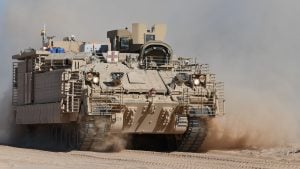
A medical variant of the BAE Armored Multi-Purpose Vehicle. AMPVs will serve as both armored ambulances and mobile operating rooms.
Armor
The NDAA’s second biggest hit came to the Next Generation Combat Vehicle portfolio, but in this case, the Army asked for two programs to be cut after they ran into delays.
The Army had requested $327.7 million for System Development & Demonstration (SDD) of the Optionally Manned Fighting Vehicle, a heavily automated replacement for the Reagan-era M2 Bradley troop carrier. As Breaking D readers know, Army leaders realized their OMFV timeline was way too ambitious. So early this year they rebooted the program with a more manageable schedule. Because of that delay, the Army determined, some $83 million of the original requested wouldn’t actually be needed in 2021. The conference committee cut that exact amount.
The Army also identified, and the NDAA cuts, some $20 million “excess to need” for System Development & Demonstration on the Armored Multi-Purpose Vehicle (AMPV), basically a turretless Bradley to replace for the Vietnam-era M113 tracked transport. Manufacturer BAE Systems had struggled with quality control and, while the factory issues are now fixed, the production line is still catching up to the original schedule.
On the upside for armored vehicle modernization, Congress added $47 million for SDD on Vehicle Protection Systems. VPS, also known as Active Protection Systems, are a vital piece of defensive kit for future combat vehicles, because they use a miniaturized missile defense system to shoot down incoming anti-tank missiles. (Jamming and decoys are also part of the system). After seeing the effect of similar Russian systems in Ukraine, the Army’s urgently fielding two Israeli systems – Trophy Active Protection System on its M1 Abrams tanks and the Rafael Iron Fist on its M2 Bradleys – while exploring options for the lighter-weight 8×8 Stryker vehicles.
Congress also added $321 million to upgun 60 additional Strykers with heavier weapons, bringing the total Stryker upgrade program to $1.2 billion for 214 vehicles. The Army hadn’t included the extra 60 vehicles in its budget submission, but they were part of its formal Unfunded Priorities List submitted to Congress.
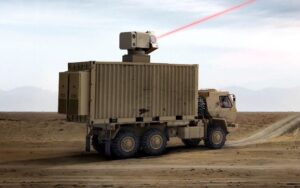
General Atomics-Boeing concept for a laser-armed version of the Indirect Fire Protection Capability
Picking at IFPC
The NDAA blows hot and cold on this portfolio. Congress continues to hammer on its least-favorite missile defense program, the Army’s Indirect Fire Protection Capability (IFPC). The NDAA cuts IFPC procurement by $40.7 million, nearly 40 percent below the $106 million request, and it cuts R&D (specifically System Development & Demonstration) by $47.8 million, 20 percent below the $235.8 million request. Congress has been so skeptical of the Army’s efforts to develop this tactical defensive system that it forced the service to buy two batteries of the Israeli Iron Dome system as a stopgap.
On the other hand, Congress apparently believes in lasers, because the NDAA adds $20.5 million for them to early R&D (half in Applied Research, half in Advanced Technology). It adds $18.5 million for R&D into other aspects of air & missile defense ($5.5M in Advanced Technology, $13M in Advanced Component Development & Prototypes).
The conference also wholeheartedly supports the new Army-led multi-service effort to shoot down small drones, the Joint Counter-UAS Office, adding $42.5 million.
Norway’s top officer on his ‘biggest challenge,’ next frigate and new NATO neighbors
Gen. Eirik Kristoffersen, Norway’s Chief of Defense, talks to Breaking Defense about his plans for spending on new frigates and subs, the challenges of upgrading Norway’s “digital backbone” and refilling the military’s stocks.


























